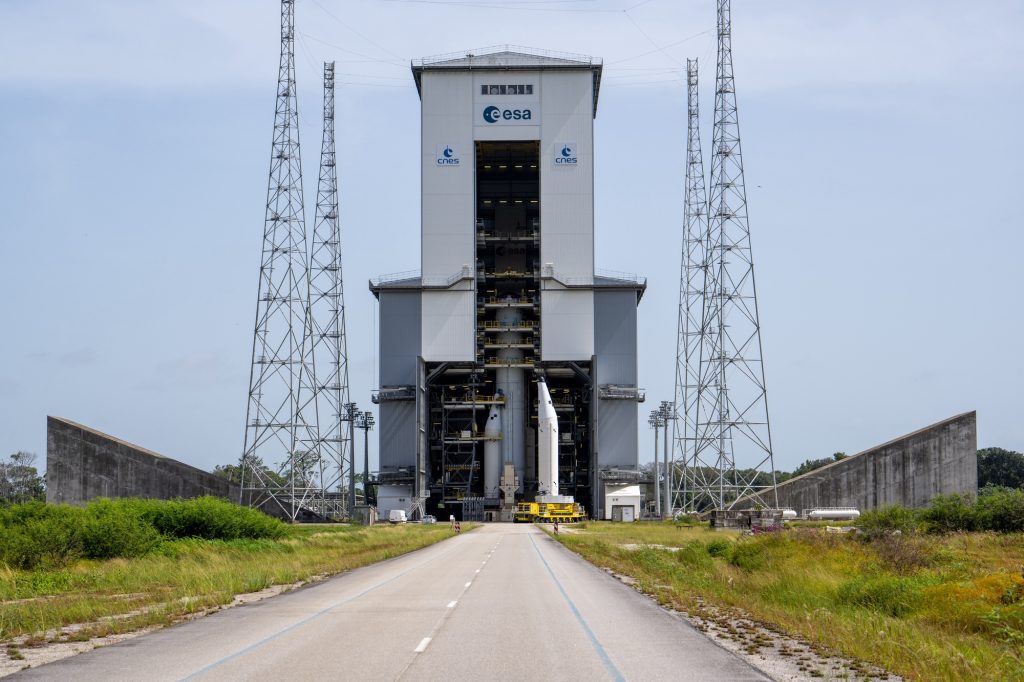WASHINGTON — Avio is depending on its growing defense propulsion business to make up for the lack of launches by Ariane 6 and Vega C.
The company announced on May 8 that it made 78.8 million euros ($85 million) in net revenues in the first quarter of 2024, an increase from 59.8 million euros in the same period last year. The company achieved an adjusted earnings before interest, taxes, depreciation and amortization (EBITDA) of 3.4 million euros for the quarter, which is up from 2.6 million euros a year ago.
The rise in revenue was due to activities outside its main business of making solid rocket motors for Ariane and Vega launch vehicles. Work on defense propulsion projects increased from 7 million euros in the first quarter of 2023 to 15 million euros in the first quarter of 2024, and revenue from other technology development projects also rose from 3 million to 14 million euros during the same period.
Avio anticipates this trend to continue and reported 80 million euros in orders in the first quarter for defense programs, manufacturing motors for air-defense missiles. This is a notable increase from the 120 million euros in defense orders for the whole of 2023.
“Defense propulsion in the last few years was not an important part of our portfolio,” said Giulio Ranzo, chief executive of Avio, during a May 9 earnings call. However, this is changing as the order backlog grows to nearly two and a half times that for the Ariane 6. “It’s now becoming a very important of our backlog.”
Ranzo also emphasized the significance of this shift for the company as it copes with a decline in space propulsion work. “It helps to generate profit and absorb fixed costs at a time when P120 production is not yet where it should be,” he said. P120 is the solid motor used in the first stage of Vega C and in the solid rocket boosters for Ariane 6.
“It also provides great opportunity for growth to come,” he added, pointing to a chart that projected a 22% annual increase in defense motor production through the late 2020s.
P120 motor production is currently low partly due to delays in the introduction of the Ariane 6. “The delay accumulated in the Ariane 6 program was such that we have essentially filled all of the possible inventory capacity, so we could not manufacture any more,” Ranzo said.
Motor production will ramp up once Ariane 6 begins launches and starts using the existing inventory of motors. Current P120 production, which is less than 10 motors annually, will increase to 15 in 2025 and further in 2026 and beyond.
The first Ariane 6 launch is still set for a timeframe between mid-June and late July, with no updates from the European Space Agency, ArianeGroup or others on a more specific date.
“Our experience proves that last-minute problems are always possible when you come along with a completely new system,” Ranzo remarked. “It seems to me we’re going in the right direction for a flight in July.”
Avio is also preparing for a crucial test of the redesigned Zefiro-40 motor used on the second stage of the Vega C. This stage was implicated in the failure of the second Vega C launch in December 2022 due to faulty material used in the motor’s nozzle. The material has been replaced, but a static-fire test in June 2023 also failed. resulting in a complete redesign of the nozzle.
The static-fire test is planned for the end of May, according to Ranzo, which keeps the company on track to bring Vega C back to flight by the end of this year. The final launch of the original version of Vega, which does not use the Zefiro-40 motor, is set for September.
Despite the pause in Vega C launches, the rocket received an order on April 30 when ESA signed an agreement for the launch of the Solar Wind Magnetosphere Ionosphere Link Explorer, or SMILE, mission jointly developed by ESA and the Chinese Academy of Sciences. Vega C will launch SMILE into a highly elliptical orbit in late 2025 to study the interaction of the solar wind with the Earth’s magnetosphere.
The launch agreement with SMILE is between ESA and Arianespace, which continues to market the Avio-built Vega C. However, Arianespace and Avio agreed at the European Space Summit last November to transfer the Vega C launch service provider responsibilities to Avio.
Ranzo said Avio is still in discussions with ESA and Arianespace regarding when to make that handover. He anticipates a period of transition lasting a year to a year and a half with Avio working alongside Arianespace before taking over from them.
“We do this to ensure that we offer the best continuity of service to customers and that the transition is seamless,” he said. Avio is establishing a department within the company to assume that launch services role, including sales, mission preparation, and customer support. This will lead to increased costs for Avio but will also enable it to generate revenue that currently goes to Arianespace for Vega launches.
“In the medium term, we anticipate seeing improvements on the profit side,” he said, but added he could not yet measure that growth.









